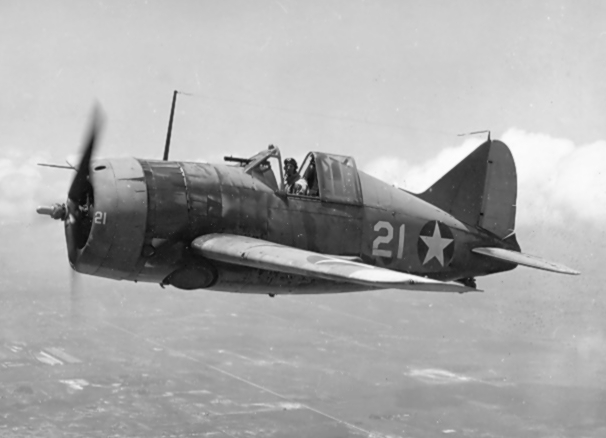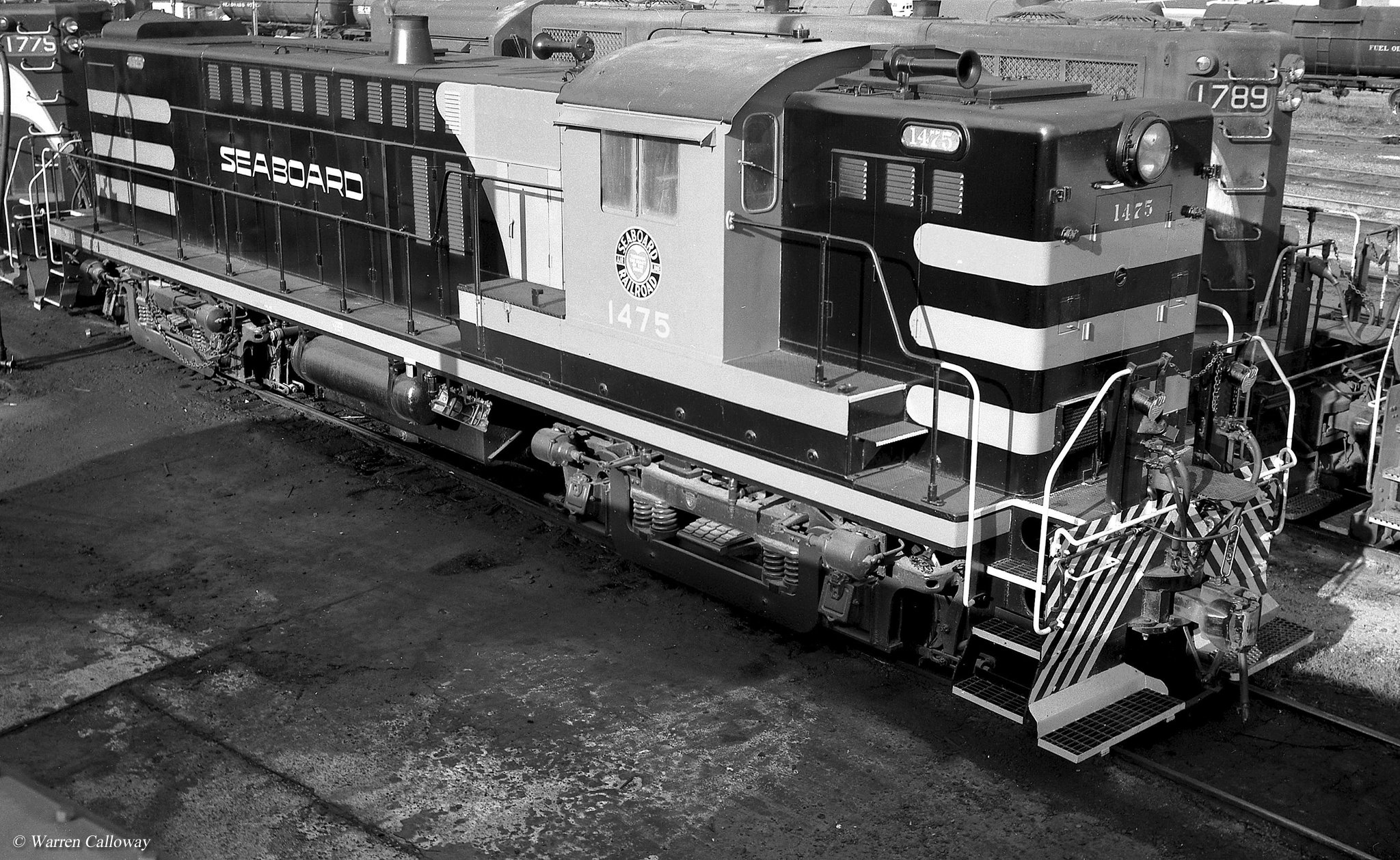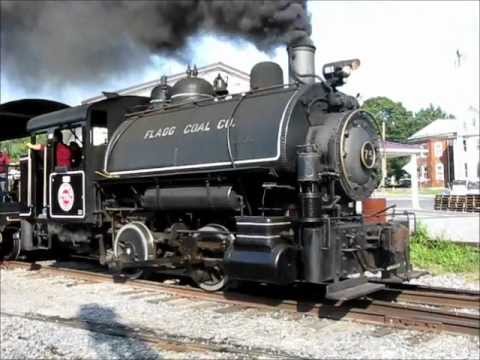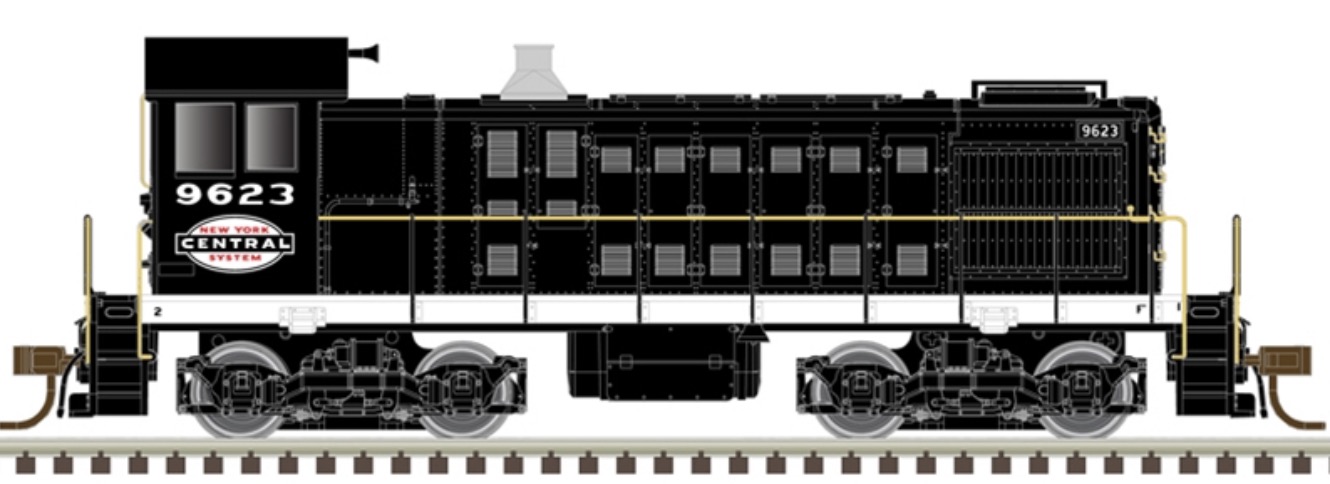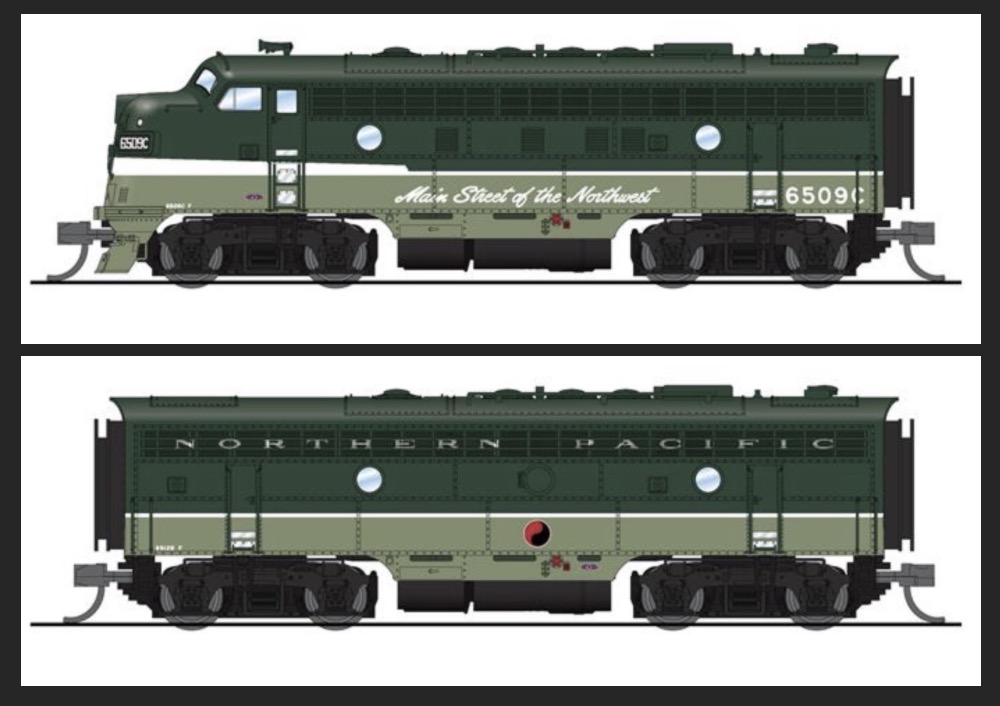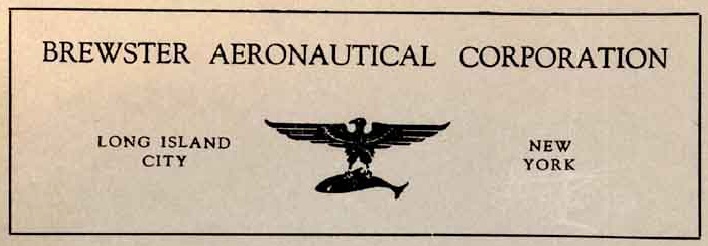History: The Brewster F2A Buffalo is an American fighter aircraft which saw service early in World War II. Designed and built by the Brewster Aeronautical Corporation, it was one of the first U.S. monoplanes with an arrestor hook and other modifications for aircraft carriers. The Buffalo won a competition against the Grumman F4F Wildcat in 1939 to become the U.S. Navy's first monoplane fighter aircraft. Although superior to the Grumman F3F biplane it replaced, and the early F4Fs, the Buffalo was largely obsolete when the United States entered the war, being unstable and overweight, especially when compared to the Japanese Mitsubishi A6M Zero.
Several nations, including Finland, Belgium, Britain and the Netherlands, ordered the Buffalo. The Finns were the most successful with their Buffalos, flying them in combat against early Soviet fighters with excellent results. During the Continuation War of 1941–1944, the B-239s (de-navalized F2A-1) operated by the Finnish Air Force proved capable of engaging and destroying most types of Soviet fighter aircraft operating against Finland at that time and achieving in the first phase of that conflict 32 Soviet aircraft shot down for every B-239 lost, and producing 36 Buffalo "aces".
In December 1941, Buffalos operated by both British Commonwealth (B-339E) and Dutch (B-339D) air forces in South East Asia suffered severe losses in combat against the Japanese Navy's Mitsubishi A6M Zero and the Japanese Army's Nakajima Ki-43 "Oscar". The British attempted to lighten their Buffalos by removing ammunition and fuel and installing lighter guns to improve performance, but it made little difference. After the first few engagements, the Dutch halved the fuel and ammunition load in the wing, which allowed their Buffalos (and their Hurricanes) to stay with the Oscars in turns.
The Buffalo was built in three variants for the U.S. Navy: the F2A-1, F2A-2 and F2A-3. (In foreign service, with lower horsepower engines, these types were designated B-239, B-339, and B-339-23 respectively.) The F2A-3 variant saw action with United States Marine Corps (USMC) squadrons at the Battle of Midway. Shown by the experience of Midway to be no match for the Zero, the F2A-3 was derided by USMC pilots as a "flying coffin." Indeed, the F2A-3s performance was substantially inferior to the F2A-2 variant used by the Navy before the outbreak of the war despite detail improvements.
Several nations, including Finland, Belgium, Britain and the Netherlands, ordered the Buffalo. The Finns were the most successful with their Buffalos, flying them in combat against early Soviet fighters with excellent results. During the Continuation War of 1941–1944, the B-239s (de-navalized F2A-1) operated by the Finnish Air Force proved capable of engaging and destroying most types of Soviet fighter aircraft operating against Finland at that time and achieving in the first phase of that conflict 32 Soviet aircraft shot down for every B-239 lost, and producing 36 Buffalo "aces".
In December 1941, Buffalos operated by both British Commonwealth (B-339E) and Dutch (B-339D) air forces in South East Asia suffered severe losses in combat against the Japanese Navy's Mitsubishi A6M Zero and the Japanese Army's Nakajima Ki-43 "Oscar". The British attempted to lighten their Buffalos by removing ammunition and fuel and installing lighter guns to improve performance, but it made little difference. After the first few engagements, the Dutch halved the fuel and ammunition load in the wing, which allowed their Buffalos (and their Hurricanes) to stay with the Oscars in turns.
The Buffalo was built in three variants for the U.S. Navy: the F2A-1, F2A-2 and F2A-3. (In foreign service, with lower horsepower engines, these types were designated B-239, B-339, and B-339-23 respectively.) The F2A-3 variant saw action with United States Marine Corps (USMC) squadrons at the Battle of Midway. Shown by the experience of Midway to be no match for the Zero, the F2A-3 was derided by USMC pilots as a "flying coffin." Indeed, the F2A-3s performance was substantially inferior to the F2A-2 variant used by the Navy before the outbreak of the war despite detail improvements.
Railroad/Company: The Brewster Aeronautical Corporation was a North American defense contractor that operated from the 1930s until the end of World War II.
It started existence as an aircraft division of Brewster & Co., a company that originally sold carriages and had branched into automobile bodies and airplane parts. In 1932, James Work, an aeronautical engineer, bought the division for US$30,000 and created the Brewster Aeronautical Corporation. Brewster started out making seaplane floats and wing panels, but with the hire of chief engineer Dayton Brown it embarked on its own designs. It operated three aircraft plants, at the Brewster Building in Long Island City, New York, Newark, New Jersey, and, in 1941, in Warminster Township, Pennsylvania, which was then known as NAS Johnsville.
Brown's first design, in 1934, was a two-seat scout-bomber, the Brewster SBA, which first flew in 1936; subsequently the Naval Aircraft Factory built them, with the designation SBN-1. The Brewster SB2A Buccaneer was a follow-on design that first flew in 1941 and was also ordered by the Royal Air Force, who named it the Bermuda.
A design in 1936 for a carrier-capable monoplane resulted in the Brewster F2A (named Buffalo by the British), which was chosen over an early version of the Grumman F4F Wildcat. The F2A prototype handled well in 1938 tests, and the Navy ordered 54. However, production was slow, at least partly due to an inefficient factory in Queens, New York. The Navy ended up ordering Wildcats, which by 1938 had been greatly improved.
It started existence as an aircraft division of Brewster & Co., a company that originally sold carriages and had branched into automobile bodies and airplane parts. In 1932, James Work, an aeronautical engineer, bought the division for US$30,000 and created the Brewster Aeronautical Corporation. Brewster started out making seaplane floats and wing panels, but with the hire of chief engineer Dayton Brown it embarked on its own designs. It operated three aircraft plants, at the Brewster Building in Long Island City, New York, Newark, New Jersey, and, in 1941, in Warminster Township, Pennsylvania, which was then known as NAS Johnsville.
Brown's first design, in 1934, was a two-seat scout-bomber, the Brewster SBA, which first flew in 1936; subsequently the Naval Aircraft Factory built them, with the designation SBN-1. The Brewster SB2A Buccaneer was a follow-on design that first flew in 1941 and was also ordered by the Royal Air Force, who named it the Bermuda.
A design in 1936 for a carrier-capable monoplane resulted in the Brewster F2A (named Buffalo by the British), which was chosen over an early version of the Grumman F4F Wildcat. The F2A prototype handled well in 1938 tests, and the Navy ordered 54. However, production was slow, at least partly due to an inefficient factory in Queens, New York. The Navy ended up ordering Wildcats, which by 1938 had been greatly improved.
Item Links: We found: 2 different collections associated with Aircraft - Propeller - F2 Buffalo
- Collection War at Sea: 3 different items.
- Collection Axis & Allies Air Force: 2 different items.
Item created by: gdm on 2019-08-12 14:05:39. Last edited by gdm on 2019-08-12 14:07:36
If you see errors or missing data in this entry, please feel free to log in and edit it. Anyone with a Gmail account can log in instantly.
If you see errors or missing data in this entry, please feel free to log in and edit it. Anyone with a Gmail account can log in instantly.


